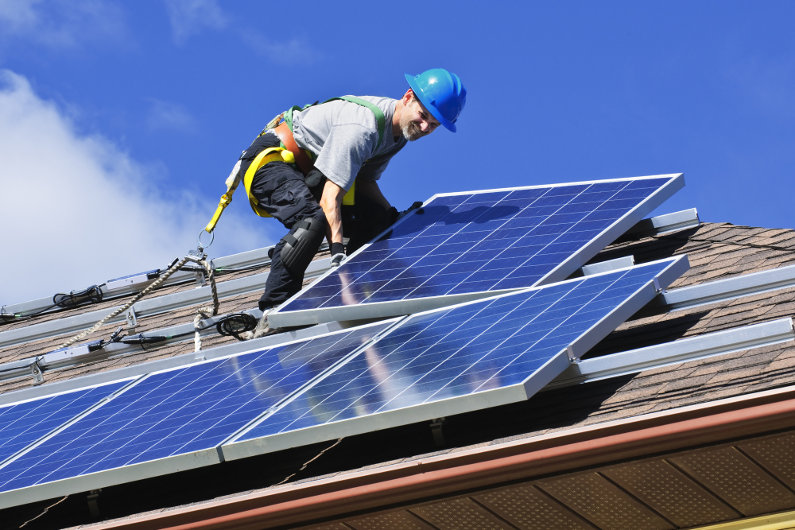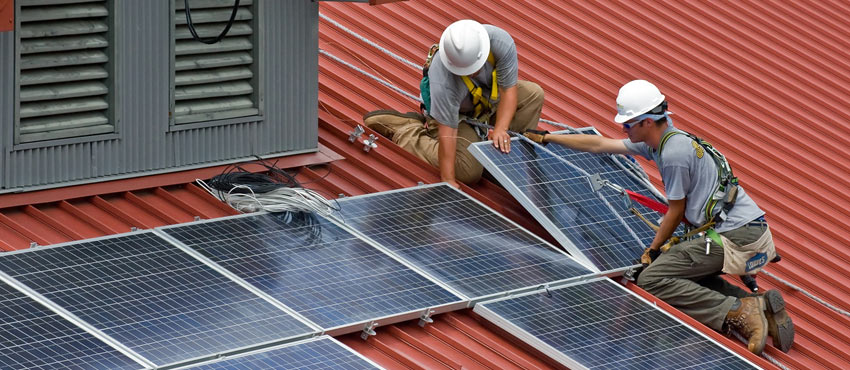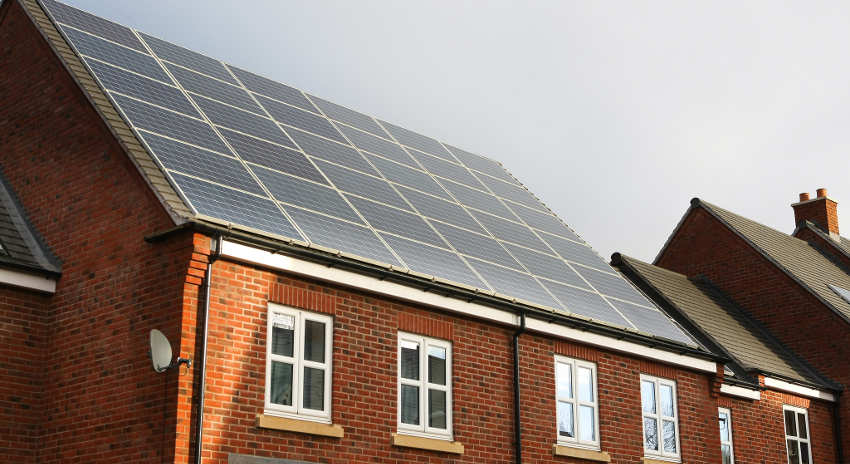As of the third quarter of 2020, Virginia had a total of 1,340.63 megawatts (MW) of solar capacity installed. That’s enough to supply the energy needs of 147,190 homes. What’s more, the price of solar in the commonwealth has dropped by about 45% within the past half-decade.
That massive price drop should be enough to consider installing solar panels at home. To top it all off, there are other programs that can make your solar installation even easier to afford.

With that said, we came up with this guide to help Old Dominion residents get to know solar panels better. Read on to discover all the key factors to consider before you buy up those photovoltaic (PV) panels.
1. Your Intended Goals for Installing Solar Panels
The primary reason consumers go solar is to reduce or even zero out their electricity bills. For many others, it’s because of how “clean” solar is; its carbon footprint is 18 times lower than coal fossil fuels. Solar’s footprint is only 6gCO2e/kWh, while it’s a staggering 109gCO2e/kWh for coal.
Then, there are others who want the best of both worlds while also boosting their property’s value.
With that said, the first thing you need to consider is what exactly you want from your solar PV system. Let’s take a look at how your intended use influences your solar panel installation.
Reduce or Eliminate Electricity Bills
In this case, your home’s electricity usage will influence the number of solar panels you need. The more electrical power you use, the more PV panels you need to meet your high electricity usage.
So, let’s assume your usage is the same as the average monthly consumption of 1,122 kWh in Virginia. This means your daily average energy consumption is about 37.4 kWh.
Now, suppose you’re getting 280-watt solar panels. This means that each panel can generate 280 watts per hour.
If your panels can get about 4 hours of solid sunshine each day, each panel can generate 1,120 watts per day. That’s 1.12 kW per day per panel, which you then divide by 37.4 kWh (your daily electricity consumption).
Doing the math, you’d need about 34 panels to produce 37.4 kW of energy per day. With this set-up, you should be able to eliminate your electricity bills. During excellent days, they may even produce more than what you need!
Speaking of which, you can store excess solar energy in solar batteries. You can then use this stored power the next time your panels don’t generate enough, say, during cloudy days.
Turn Your Home Into a Greener Living Space
In 2019, each kWh of electricity generated in the US resulted in 0.92 pounds of carbon dioxide emissions. That indicates how a daily electricity usage of 37.4 kWh results in 34.4 lbs. of CO2 emissions. So, your home may be emitting 12,559 lbs. of CO2 from electricity alone each year!
This shows how going solar, regardless of the number of panels you use, can help the environment. After all, solar energy produces far less CO2, so every kWh of solar energy you use cuts your CO2 emissions.
The whole world benefits from reduced CO2 emissions since CO2 is a chief greenhouse gas. As a GHG, it contributes to global warming, extreme weather conditions, and rising seas. It also endangers wildlife, and in high amounts, can cause adverse health effects.
2. The Number of Peak Hours in Your Area
The “solid” sunshine we mentioned above refers to “peak sunlight hours.” These are specific hours in which solar PV panels produce about 1,000 watts of energy per square meter. These are the times of the day at which the sunlight is most intense.
Peak sunlight hours vary per state and region, but in Virginia, the average is 3.5 to 4 hours a day. That’s why the above example used 4 hours when calculating solar PV output. Usually, the closer you are to the equator, the more sunlight you get (and the more intense it is).
3. Your Roof’s Orientation
Solar panels in Virginia (or anywhere in the US, for that matter) perform best when facing south. After all, this is the direction in which the sun shines the most. So, south-facing solar PV panels get exposed to the most direct sunlight.
The roof is also often the best solar panel installation location, as it has an unobstructed view of the sky. Don’t worry, though, as solar PV panels can generate power even when it’s cloudy. However, to ensure maximum output, your panels should receive direct sunlight.
East- and west-facing solar panels can still generate power, but to a lower extent. They usually have a 20% lower maximum overall output compared to south-facing panels.

4. The Condition of Your Roof
Let’s say you do need 34 solar panels to harvest enough energy from the sun to power your home. Before installing all those panels on the roof, make sure your roof can bear that extra weight!
Solar panels are heavy, with the average 60-cell PV panel weighing about 40 pounds each. Multiply that by 34 panels, and you’re looking at a total weight of 1,360 pounds.
If you have an older roof, it most likely won’t be able to bear that weight. Your roof may not be big enough to hold all those panels in the first place.
In that case, you should consider going for ground-mounted solar panels. The advantage to such systems is that you can place them anywhere that gets a lot of direct sunlight. Do note that they can be more expensive than roof-mounted systems, though.
5. The Incentives You Qualify For
Even if you need ground-mounted panels, you can still cut costs with solar incentives. There’s the federal tax credit, as well as a few from the Commonwealth itself. Local solar companies and energy providers also incentivize consumers who go solar.
Federal Investment Tax Credit
The Federal Investment Tax Credit (ICT) is a nationwide dollar-for-dollar tax incentive. It incentivizes homeowners and businesses for energy-efficient improvements, such as solar PV systems.
Solar panels installed from 2021 to 2022 can qualify for a 26% tax credit. This goes down to 22% for projects that commence in 2023.
The ITC isn’t a cash discount, but it’s a considerable deduction to your federal income taxes. That’s because you can apply the 26% to almost all solar project-related costs.
Let’s say your solar panel installation costs $17,500 and that this amount qualifies for the 26% ITC. In this case, your total credits would amount to $4,550.
You can then deduct that $4,550 from the total federal income taxes you need to pay. If you don’t owe that much, you can “reserve” your credits and roll them over to the following year.
Net Metering
With net metering, you can send “surplus” solar power to the electricity grid. Your electricity company then rewards you with “credits.” You can then use these credits to reduce your next month’s bill or even “save” them up for cloudy months.
Not all utility providers implement such programs, though. So, as you search online for a “solar company near me,” be sure to check if they offer assistance for net metering. This way, they can help connect you to a facility that does.
Residential Property Tax Exemption
When you install solar panels in Virginia, you won’t need to pay property tax for them. This means that no property tax will get applied to your PV system. This also means that the property taxes you owe won’t increase due to your solar panels.
Keep in mind, though, that local governments can amend this legislation. For example, they may control whether you get a full or only a partial exemption for your PV panels. So, check with your municipal government first to be sure.
6. Leasing vs. Financing Your Solar Panels
If solar installation cost is the only thing holding you back, consider getting a solar loan. It’s a financing program designed specifically to fund solar PV system installation. You can use it to cover both the equipment and the necessary installation services.
You’d want to go with a loan instead of a lease, as the latter means not being eligible for the ICT. That’s because leasing your panels means “borrowing” them from the lessor. As a lessee, you won’t “own” the equipment, so you won’t qualify for the ICT, either.
Besides, most solar loans don’t require down payments. They usually have low-interest rates, too. Plus, you’ll be the owner of the solar panels, so you can still qualify for the ICT.

Go Get Those Solar Panels Now
Whatever your reason for going solar, it can help you become a “greener” consumer. Since solar is clean and renewable, it’s no doubt a healthier and safer source of energy. However, the cherry on the top is that installing solar panels also helps you save on energy bills.
So, as early as now, consider comparing your local solar installation companies! The sooner you do, the sooner you can start saving not just money but also the environment.
Ready for more innovative strategies that you can use at home or in your business? Be sure to check out our other educational blog posts and resources then!


